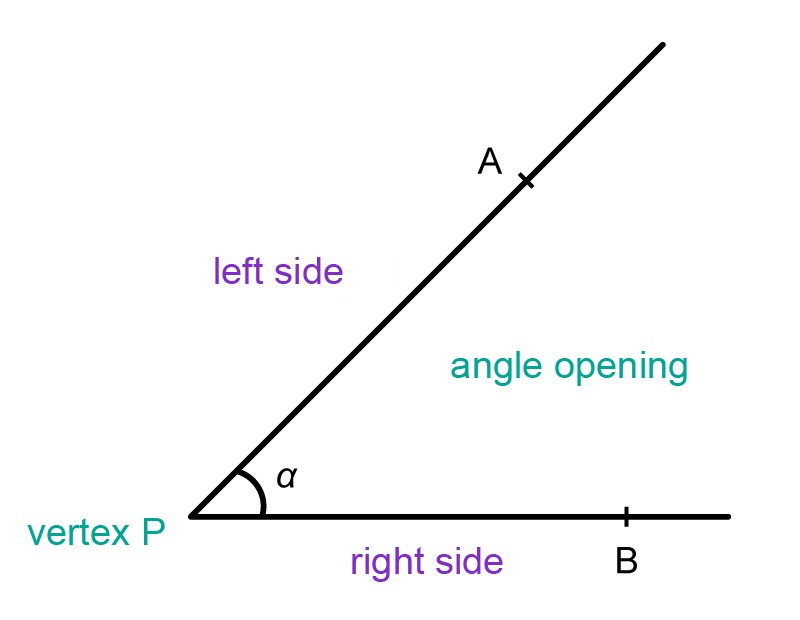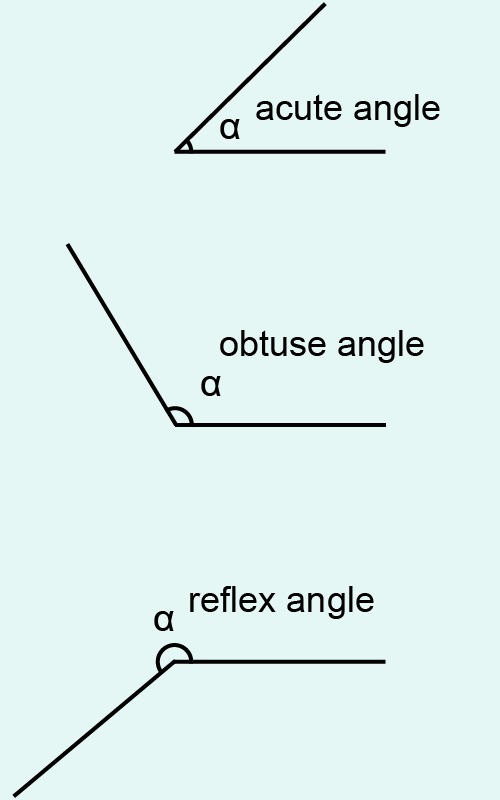Basic concepts and theory
An angle is a part of a figure that is bounded by two rays starting from the same point.

When drawing an angle, the plane is divided into two corners. Unless otherwise stated, the smaller of the resulting corners is usually the angle in question. The corner parts of the angle are the vertex and the rays. When looking to the open part from the tip of the angle, the sides are called the left side and the right side.
Angles are often named with Greek letters [[$ \alpha, \beta, \gamma, \delta, … $]] (read: alpha, beta, gamma, delta). An angle can also be named by its vertex and points selected from its rays (angle APB or [[$ \angle $]] APB), or by the vertex alone (angle P or [[$ \angle $]] P). The magnitude of an angle is measured in degrees.
Types of angles
- Zero angle 0°
- Right angle 90°
- Straight angle 180°
- Full angle 360°
Oblique angles 0° < α < 180°
- acute angles 0° < α < 90°
- obtuse angles 0° < α < 180°
